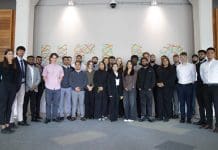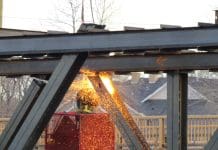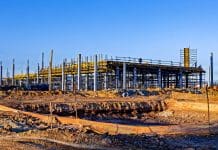BSRIA has launched its Inspiring Tomorrows Engineers publication which was written by workplace student, Emma Hardacre
Inspiring Tomorrows Engineers report considers engineering careers over a wide selection of industries and how to choose the appropriate career path and entry route suitable for individual interests and skills. The work was carried out as part of BSRIA’s INSPIRE project which works with local schools, national and local politicians and the media to promote STEM and change its perceptions.
Choosing the right engineering path is a “daunting process” and one that must be made “early on” before selecting exam options, college courses or apprenticeships. The publication highlights specifics on the myriad of careers in engineering, especially those related to Building Services: BSRIA’s main body of work. Inspiring Tomorrows Engineers offers a cross section of information on the main responsibilities, entry routes, salary ranges and career progression opportunities for each vocation.
It is the responsibility of BSRIA members, industry and government to attract, inspire and engage the next generation of engineers. Building services changes lives, saves the planet and brings communities together.
INSPIRE raised the question of why are STEM subjects important? What does engineering mean for you? Why does technology matter? There is one answer to those three questions which is quite simply “everything”.
BSRIA is celebrating the 2018 Year of Engineering and will be running a series of events and careers days with local schools and colleges. This national campaign is designed to increase awareness and understanding of what engineers do among young people aged seven to 16, their parents and teachers.
Emma researched roles from; architect to civil engineer, environmental adviser, geotechnical contractor, acoustical engineer, lift & escalator engineer to structural engineering technician.
Under each role Emma looked at – she explored:
- Job description.
- Entry routes.
- Professional qualifications available.
- Career development options.
- Salary range per year.
- References and useful resources.
Emma also had a glimpse into the future:
BIM – on the construction site – not just in the design phase.
Currently, BIM managers/technicians are only found in the design phase. The idea is to extend this into the construction phase as well to make the whole process smoother and more coherent.
Smart Buildings
Fitting sensors into the structure of the building to monitor things like strain and thermal efficiency over the life time of the building. It will mean that the performance of the building can be monitored throughout its whole life time and any adjustments or repairs needed can be made before they threaten the integrity of the buildings structure and ability to function.
Artificial Intelligence
Will humans be replaced by machines to complete a task? New machines could be brought in to create designs, survey sites and complete construction tasks.
Wellbeing
Will there be a greater focus on what buildings can do for the wellbeing of its occupants? Will there be engineers employed/trained solely for this purpose?
Soft Landings – smoother handover process
As it stands, there is no real hand over process between the engineers and contractors responsible for constructing the building and the facilities managers and tenants who take on the building after completion. This leads to a lack of understanding as to how to utilise the buildings functions and ensure it is properly maintained.







![[VIDEO] HS2 M6 viaduct slide completed early The HS2 M6 Viaduct on its sliding journey](https://www.pbctoday.co.uk/news/wp-content/uploads/2025/09/M6-viaduct-East-Deck-in-place-over-the-motorway-September-2025-218x150.jpg)






